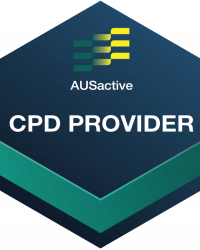Reformer Repertoire
Feet in Straps:
Frog
Alternate Names
Little Frog, Froggie, Pilates V-position
Derived From
Classical Reformer: Feet in Straps: Frogs
Primary Element
Stability
Why for Primary?
The Feet in Straps series builds on the Footwork series and challenges pelvis stability whilst continuing to use the larger muscle groups of the legs.
Can the legs move independently of the pelvis? Keeping the pelvis still and moving the legs is the aim here, creating and testing the stability of the pelvis.
Secondary Element
Strength
Why for Secondary?
To strengthen hip extensor and abductor muscles (gluteals and hamstrings), the hip adductors and to connect with, activate and develop the pelvis stabilisation muscles.
Tertiary Element
Mobility
Why Tertiary?
The hip, knee and ankle joints are all working here, although not always through their full range of motion.
Repetitions
8-10
Apparatus Setup
Suggested springs
- Number system: 1.5 springs
- Colour system: 2 x red springs + 1 blue spring
- Resistance: medium
Headrest position flat unless any neck issues or the client feels more supported with the head lifted using the headrest or a slightly deflated Pilates ball or cushion.
Foot bar one position is set at one position down from vertical, or on many Reformers the top angled position.
Plane of Motion
Sagittal
Targeted Muscles
To connect with, activate and develop the pelvis stabilisation muscles the focus is on gluteus medius and gluteus maximus and the deep abdominal muscles transversus abdominis.
To create the external rotation at the pelvis gluteus medius, minimus and tensor fasciae latae are working to create and maintain the abduction throughout the exercise.
The pressing of the heels together assists with activating the hip adductors, the muscles in the medial compartment of the thigh. There are five muscles in this group:
- Gracilis
- Obturator externus
- Adductor brevis
- Adductor longus
- Adductor longus
Warnings
Not suitable for some hip, knee and ankle pathologies, or if the client is unable to work in a pain free range of motion during the exercise.
Also unsuitable if external rotation at the pelvis is contraindicated.
Execution
Lie supine on the Reformer in a neutral pelvis position and place the feet into the long straps (over the arch of the foot) bend the knees, with the hips externally rotated allowing the ropes to fall on the inside of the knees. Softly dorsiflex the feet and press the heels together in a V position or turnout (similar to that of the exercise Footwork: V-position Toes). Arms positioned beside the body with the shoulders squared against the shoulder blocks.
Exhale to draw in abdominal muscles and straighten the legs, extending the hips and knees while maintaining stability in the pelvis and torso. Inhale bend the knees and flex the hips, return to where the knees are positioned back over the ASIS (hip bones). Maintain a consistent degree of hip rotation and angle between the feet and the foot bar throughout the movement.
Observations
Do a body scan of the client taking note of the following points
- Pelvis
- Are the hip bones even horizontally or is the client hitching, leaning towards or biasing one side?
- Can the client move their thighs in and out without the pelvis moving?
- Legs
- Are the thigh bones at approximately a 45 degree angle? There needs to be a control element of holding the external rotation using the gluteal muscles here. Too narrow or too wide won’t require the same work
- Feet
- Is the long strap around the arches of the feet with the toes relaxed?
- Are the fleet softly dorsiflexed with the ankles connected throughout the movement?
- Are the insides of the feet lifting or leaning outward? (supinated)
- Are the insides of the feet rolling inward? (pronated)
- Apparatus
- Is there tension on the springs the whole time? Or is the carriage crashing to the stopper or ‘park’ indicating a lack of control and a push by the client beyond their ideal range of motion? If the carriage is crashing encourage the client to reduce their range of motion and slow their movement down to focus on controlling the return phase, or reduce the spring load so the client can control the springs.
Learning Style Technique Cues
Auditory – word associations that connect mind and body
- The aim is to keep the pelvis still whilst the legs are moving
- Say the client’s name when you’re about to interact with them
- Avoid bringing the knees too close to the chest, or allowing the tailbone to lift
- Maintain the same angle of the legs, feet and ankles throughout the movement. You’re aiming for around 30-45 degrees or in line with the shoulders or armpits
Visual
- Imagine a frog jumping slowly, springing off the ground as the legs straighten and landing with control
- Imagine straightening the legs and squeezing them together at the same time, like you’re holding a ball between the legs
- You may demonstrate a part of the movement as a visual representation for the client to see
Kinaesthetic
- As you press the legs straight feel the abdominals and centre of the torso engage
- Try not to collapse the torso as the knees bend
- Make a stop sign with the hands on the ASIS (hip bones), when the thighs tough the hands press away again
- Keep the heels still while squeezing them together to engage the hip adductors
Modifications and Variations
Regress the exercise by
- Increasing the spring setting to two red springs for more support and assistance with the pelvis stability component of the exercise
- Reduce repetitions and/or pace
- Reducing the range of motion so the client can focus on pelvis stability
- Regress to the Foot Work: V-Position Toes
Progress the exercise by
- Decreasing the springs to one red spring to further challenge pelvis stability
- Placing a slightly deflated Pilates ball or instability prop under the pelvis to further challenge pelvis stability
- Progressive Repertoire to work towards
Series and Transitions
This exercise is part of the Feet in Straps series which includes a range of other foot positions in the fundamental and the progressive repertoire. The Feet in Straps series can also be found in the Cadillac repertoire.
Transition to the second Feet in Straps exercise by separating the heels to hip width apart ready for Feet in Straps: Wide Frog.

